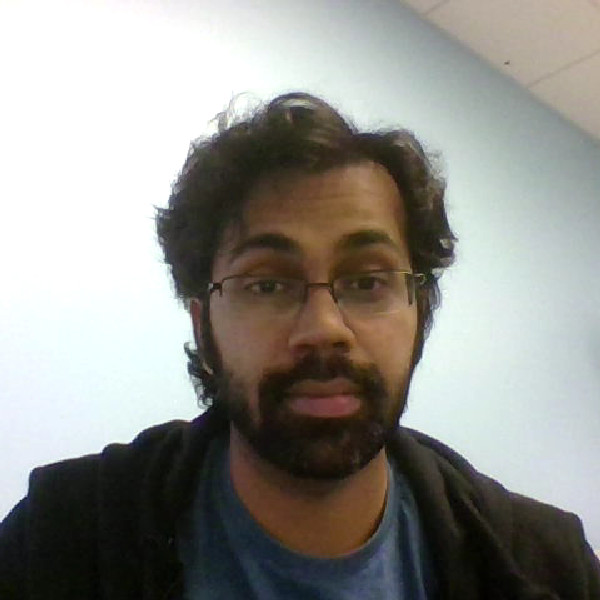
Rohit Kumar Pandey
Rohit is a machine learning researcher and engineer in the augmented perception team at Google. His recent efforts are focused on applying deep learning to style transfer, novel view synthesis and relighting for humans. He has also worked on designing and implementing efficient deep learning solutions that can be deployed on mobile devices. Prior to Google, he graduated from the University at Buffalo, SUNY with a PhD in Computer Science, where his research focused on privacy preserving deep learning and its applications to biometric authentication.
Research Areas
Authored Publications
Sort By
Google
Learning Personalized High Quality Volumetric Head Avatars from Monocular RGB Videos
Ziqian Bai
Danhang "Danny" Tang
Di Qiu
Abhimitra Meka
Mingsong Dou
Ping Tan
Thabo Beeler
2023 IEEE/CVF Conference on Computer Vision and Pattern Recognition (CVPR), IEEE
Neural Light Transport for Relighting and View Synthesis
Xiuming Zhang
Yun-Ta Tsai
Tiancheng Sun
Tianfan Xue
Philip Davidson
Christoph Rhemann
Paul Debevec
Ravi Ramamoorthi
ACM Transactions on Graphics, 40 (2021)
HumanGPS: Geodesic PreServing Feature for Dense Human Correspondence
Danhang "Danny" Tang
Mingsong Dou
Kaiwen Guo
Cem Keskin
Sofien Bouaziz
Ping Tan
Computer Vision and Pattern Recognition 2021 (2021), pp. 8
Total Relighting: Learning to Relight Portraits for Background Replacement
Christian Haene
Sofien Bouaziz
Christoph Rhemann
Paul Debevec
SIGGRAPH and TOG (2021)
Deep Relightable Textures: Volumetric Performance Capture with Neural Rendering
Abhi Meka
Christian Haene
Peter Barnum
Philip Davidson
Daniel Erickson
Jonathan Taylor
Sofien Bouaziz
Wan-Chun Alex Ma
Ryan Overbeck
Thabo Beeler
Paul Debevec
Shahram Izadi
Christian Theobalt
Christoph Rhemann
SIGGRAPH Asia and TOG (2020)
State of the Art on Neural Rendering
Ayush Tewari
Christian Theobalt
Dan B Goldman
Eli Shechtman
Gordon Wetzstein
Jason Saragih
Jun-Yan Zhu
Justus Thies
Kalyan Sunkavalli
Maneesh Agrawala
Matthias Niessner
Michael Zollhöfer
Ohad Fried
Ricardo Martin Brualla
Stephen Lombardi
Tomas Simon
Vincent Sitzmann
Computer Graphics Forum (2020)
Learning Illumination from Diverse Portraits
Wan-Chun Alex Ma
Christoph Rhemann
Jason Dourgarian
Paul Debevec
SIGGRAPH Asia 2020 Technical Communications (2020)
GeLaTO: Generative Latent Textured Objects
Ricardo Martin Brualla
Sofien Bouaziz
Matthew Brown
Dan B Goldman
European Conference on Computer Vision (2020)
Deep Reflectance Fields - High-Quality Facial Reflectance Field Inference from Color Gradient Illumination
Abhi Meka
Christian Haene
Michael Zollhöfer
Graham Fyffe
Xueming Yu
Jason Dourgarian
Peter Denny
Sofien Bouaziz
Peter Lincoln
Matt Whalen
Geoff Harvey
Jonathan Taylor
Shahram Izadi
Paul Debevec
Christian Theobalt
Julien Valentin
Christoph Rhemann
SIGGRAPH (2019)
The Relightables: Volumetric Performance Capture of Humans with Realistic Relighting
Kaiwen Guo
Peter Lincoln
Philip Davidson
Xueming Yu
Matt Whalen
Geoff Harvey
Jason Dourgarian
Danhang Tang
Anastasia Tkach
Emily Cooper
Mingsong Dou
Graham Fyffe
Christoph Rhemann
Jonathan Taylor
Paul Debevec
Shahram Izadi
SIGGRAPH Asia (2019) (to appear)
